May 18, 2024 | 23:16 GMT +7
May 18, 2024 | 23:16 GMT +7
Hotline: 0913.378.918
May 18, 2024 | 23:16 GMT +7
Hotline: 0913.378.918
MARD Deputy Minister Tran Thanh Nam on November 1-2 led a delegation to inspect projects on models of production conversion and infrastructure investment. He worked with leaders of Kiên Giang Province’s People’s Committee on piloting the construction of a large material area, at the same time establishing a Community Agricultural Promotion Group, to boost agricultural economic development.
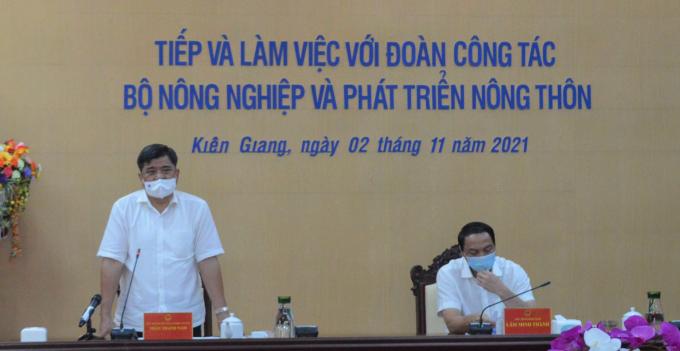
MARD Deputy Minister Tran Thanh Nam (left) works with leaders of the People's Committee of Kien Giang Province on piloting the construction of a large-scale material area, associated with establishing a Community Agricultural Promotion Group (CAPG), to boost agricultural economic development. Photo: Trung Chanh.
According to the Deputy Minister, the MARD has in recent times focused on directing the implementation of a project on rapid transforming from normal agricultural production into an agricultural business economy.
To do well in the agricultural economy, it is necessary to have a material area large enough to meet world standards with growing and farming area codes for management, traceability and intensive processing to improve the product quality value.
The MARD will implement a pilot project on building five large material production areas for rice (in Kien Giang and An Giang), fruit trees (in Tien Giang, Dong Thap, Long An and Dong Thap and Son La provinces), coffee (in Central Highlands) and afforestation (in Thua Thien - Hue). Along with that, it will build and develop cooperatives in the projected area, with the participation and association of businesses in the commodity chain.
As for large material areas of rice production, it is expected to form 100,000 hectares, of which about 20,000ha will be immediately set up in Kien Giang Province’s Long Xuyen Quadrangle and 30,000ha in An Giang Province. In such areas, it will focus on investing in proper infrastructure, processing factories and the development of farmers' organizations.
The Department of Economic Cooperation and Rural Development (DECRD) is assigned by the MARD to implement a pilot project on building a standardized agricultural, forestry and fishery material area for domestic consumption and exports. Information technology will be applied in managing material areas, building a map of agricultural production, granting codes for planting areas, and traceability. The department also undertakes works in community agricultural promotion and communication of material area development, consulting for cooperative development, building advanced rice production models for cooperatives participating in the project.
Director of the DECRD Le Duc Thinh said: “The project will focus on improving production standards and regulations, integrating values in the production chain to improve the operation efficiency. Accordingly, a raw material area must meet the following conditions: being located in the planning area, producing according to regulations and safety standards, modernizing production, applying mechanization, creating production linkages and mobilizing resources for rapid and sustainable development.”
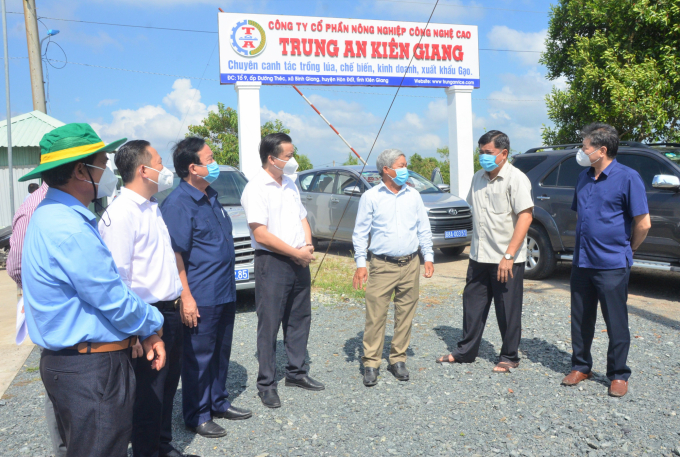
Deputy Minister Tran Thanh Nam (2nd from right) surveys a production area at Trung An Company, where a large material area could be developed. Photo: Trung Chanh.
In Kien Giang, large rice material areas will be built in three districts of Giang Thanh, Hon Dat and Kien Luong, with an area of 20,000ha. The MARD will invest in a number of infrastructure works including roads, bridges and irrigation with a total cost of about VND45 billion. Kien Giang Province will participate in dredging for inter-irrigation, strengthening the dike for protecting the material area. It will support to purchase of equipment and machinery for production at a cost of about VND9 billion.
Mr. Nguyen Van Dung, Director of Kien Giang Department of Agriculture and Rural Development (DARD), suggested that when building a large material area for rice production, planting machines should be replaced with cluster sowing ones because this kind of machine has a sowing capacity of about 8-10ha/day, suitable for large-area production. Farmers do not have to work on plating and the cost also is cheaper, according to the official.
There are now three enterprises participating in the development of large rice material areas, including Trung An Hi-tech Agriculture Joint Stock Company, Loc Troi Group and Tan Long Group. The three companies have signed in a commitment with Kien Giang Province to participate in the project with a minimum period of five years.
Kien Giang’s DARD Deputy Director, Mr. Le Huu Toan, said the province has strengths in rice production and aquaculture with its a large area of agricultural land spreading over four typical ecological zones of the western region by Hau River with fresh water all year round, the brackish U Minh Thuong, the Long Xuyen Quadrangle with alum and the islands with seawater for fishing, as well as marine farming.
According to Mr. Toan, since 2000, Kien Giang Province has decided to establish Economic and Technical Groups based in communes to work with farmers right in the fields to help transfer science and technology. Up to now, 116 communes (out of a total of 144 communes, wards and townships in the province) have had their own Economic and Technical Groups. Each group has 2-3 grassroots agricultural promotion officials with tasks to train farmers, build production models, and prevent epidemics and diseases.
Director of the National Center for Agricultural Promotion Le Quoc Thanh said the pilot project on improving the efficiency of grassroots agricultural promotion activities through the formation of a CAPG has been implemented in six provinces of Kien Giang, Dong Thap, Gia Lai, Ninh Thuan, Thua Thien Hue and Son La.
Accordingly, 18-30 CAPGs will be established (3-5 groups in each province), in concentrated material areas. The operations of these groups will be directed by the MARD and managed by localities. In total, they include about 54-90 cooperatives of which 5,000 - 9,000 members will receive knowledge on effectively reorganizing production through consultation of the CAPGs (each CAPG supports three cooperatives). The CAPG also helps deploy 30 agricultural promotion models, regularly provide market information and build commodity value chains.
Chairman of the People's Committee of Kien Giang Province Lam Minh Thanh said the outbreak of the Covid-19 pandemic had seriously affected the production and business situation of the province, especially the agricultural sector.
The province has focused on removing difficulties, helping circulate goods, maintaining agricultural production creating conditions for enterprises to restore operation in “new normal” conditions. With a population of 1.7 million with group aged 18 and over is about 1.2 million, of whom about 80% have been vaccinated against Covid-19 with the 1st dose, and the 2nd dose is over 30%. The province is striving to complete 100% vaccination by the end of the year. At the same time, it is expanding vaccination to the group of children under 18 so that they are eligible safe to go to school.
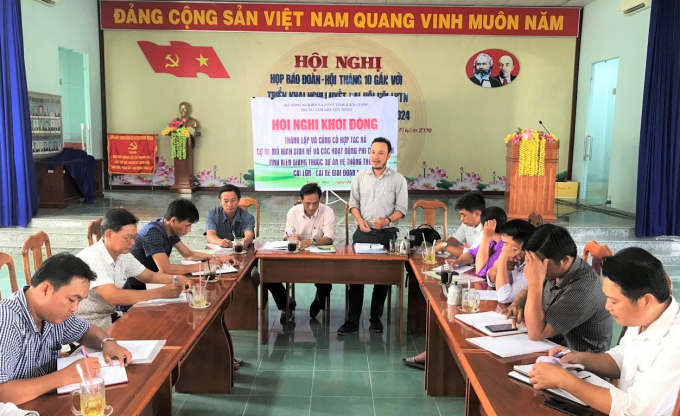
Kien Giang's agricultural promotion force has been deployed to build livelihood models to help farmers develop a sustainable agricultural economy. Photo: Trung Chanh.
Assessing the model of the Technical and Economic Group, Mr. Thanh said that, since its establishment, the group has helped farmers quickly change traditional production practices, to access new techniques and form concentrated production areas with high efficiency.
Mr. Thanh also agreed to establish a steering group to develop a large raw material area that the MARD has directed for Kien Giang Province, so that it can be put into operation soon. At the same time, it proposed the MARD soon have an effective regulation on the operation of Cai Lon - Cai Be sluice gates, because it is related to many beneficiary localities in the area and people also need to be trained to change production methods and models when the water source is better controlled.
Regarding projects, in the coming time, the MARD will continue to invest in developing sustainable agricultural production infrastructure for provinces and cities in the Mekong Delta. Specifically, it will invest in building a large fishery center in Kien Giang, with a total capital of about VND900 billion in the two districts of Chau Thanh and An Bien. It will also invest in a sustainable aquaculture development project in Hon Dat District, with a capital of about VND700 billion on an area of 5,500ha.
Deputy Minister Nam assessed that Kien Giang has great advantages to develop agricultural production. It is a key area for specialized rice production and has a very large shrimp-rice area. It also has two national parks and a large sea area selected for investment in developing a major fishing center of the region.
Kien Giang is also a construction site for the Cai Lon - Cai Be inter-regional irrigation project, which has been put into operation with efficiency. Localities need to focus on building suitable livelihood models to take full advantage of the benefits that the project brings in. They should focus on promoting production transformation and synchronization in all stages, from building standard material areas, production mechanization to processing, and building warehouses and wharves for exports.
At the same time, it is necessary to reconsolidate Economic and Technical Groups and upgrade them into Community Agricultural Promotion Groups so that to improve the efficiency of agricultural promotion activities. As for the shrimp-rice model, the MARD will direct the construction of inter-province organic production areas in An Minh (Kien Giang) and Thoi Binh (Ca Mau), in a total area of several thousand hectares attracting the participation of enterprises in the seafood and rice chains. Along with that, international organizations will also participate in consulting for technical transfer and granting global value certificates.
Translated by Linh Nguyen
/2024/05/17/5720-1-134847_782.jpg)
(VAN) EcoTraceTech - System for measuring CO2 and CH4 emissions from rice plants is the startup idea of a group of Can Tho University students.
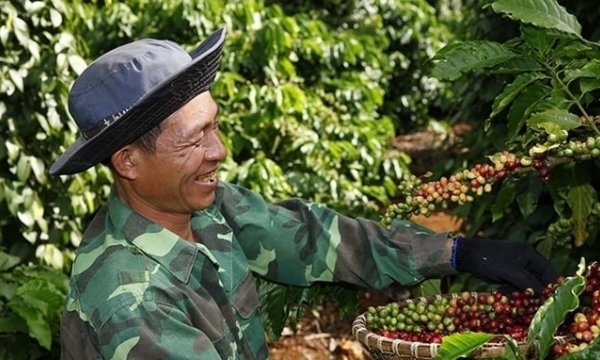
(VAN) The NESCAFÉ Plan by Nestlé Vietnam in the Central Highlands together with MARD aims to support coffee farmers in regenerative agriculture.
/2024/05/16/4437-1-223910_491.jpg)
(VAN) The Community Food Garden model is one of the outstanding activities and models of green transformation in the world as well as in Vietnam.
/2024/05/16/2455-1-111202_165.jpg)
(VAN) Artemia eggs originating in Vinh Chau (Bac Lieu) are assessed by customers to have the best quality in the world; however, domestic production output only accounts for 1%.
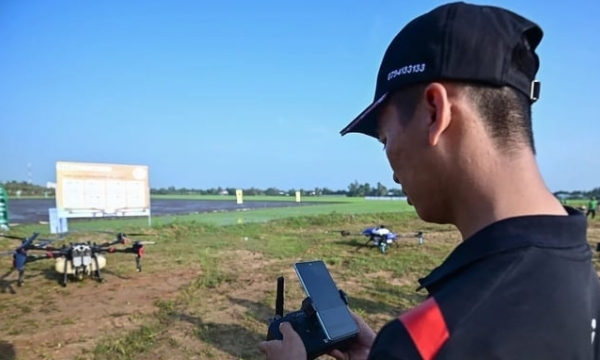
(VAN) Deputy Permanent Chairman of the National Committee for Digital Transformation Tran Luu Quang chaired the symposium on 'Promoting digital transformation of agriculture,' held on May 14.
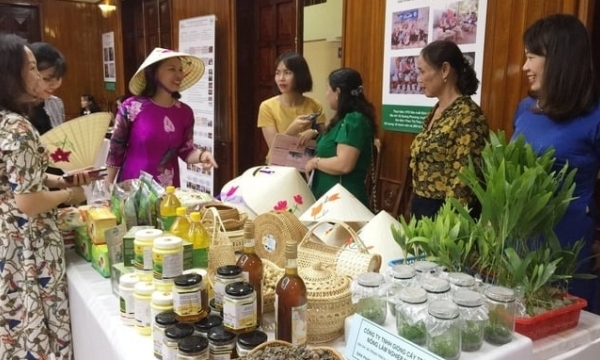
(VAN) After seven years of implementation, the Commercial Smallholder Support Project (CSSP) successfully aided numerous local households in escaping poverty, with multiple infrastructure projects initiated across Bac Kan province.
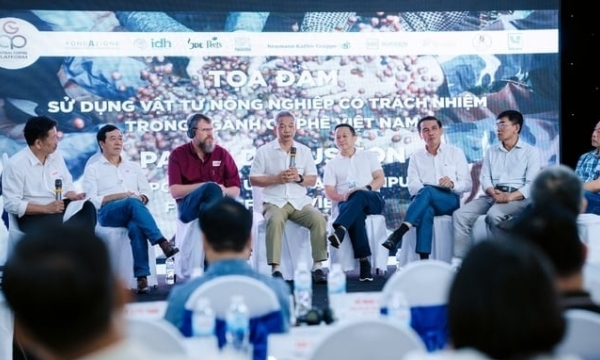
(VAN) The Global Coffee Platform (GCP) recently hosted a multi-stakeholder panel discussion on responsible use of agro-inputs in coffee production in Vietnam